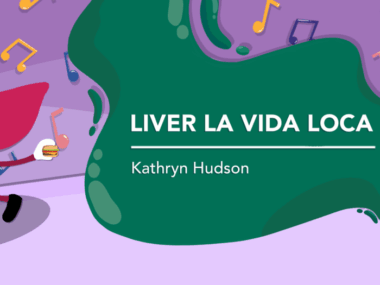Liver disorder most common Alagille symptom in children
In cholestasis, bile flow to intestines stalls, backing up in the liver
Written by |

Cholestasis, where the flow of the digestive fluid bile from the liver to the intestines slows or stalls, is the most common feature across a wide spectrum of manifestations of Alagille syndrome in children.
That’s according to a small single-center study in China that also identified four new mutations in the JAG1 gene as the likely cause of Alagille.
“Genetic testing should be conducted for children presenting with cholestasis,” the researchers wrote in the study “Clinical, pathological and genetic characteristics of 17 unrelated children with Alagille Syndrome,” which was published in BMC Pediatrics.
Alagille syndrome is a rare genetic disease characterized by a range of symptoms, including liver problems, unique facial features, and heart and bone abnormalities. Liver symptoms are mostly due to bile duct paucity, or fewer than normal tubes to carry bile to the small intestine. This results in cholestasis and bile accumulating in the liver, progressively damaging and scarring it.
Symptoms can vary widely, so some patients may show only one symptom or none at all, making a diagnosis challenging. To improve the diagnosis, especially when symptoms are few or mild, the diagnostic criteria now include genetic testing.
Researchers at the Fifth Medical Center of Chinese PLA General Hospital in Beijing retrospectively reviewed the medical data of children admitted to their hospital between 2012 and 2022 who were diagnosed with Alagille syndrome using those criteria. Their goal was to highlight the importance of an early diagnosis.
How Alagille syndrome manifests in children
The study included 17 children (10 boys, seven girls). The median age when symptoms first appeared was 2 months, with most children developing symptoms within the first three months of life. The median age at which they were diagnosed was 5 years (range, 1-15 years), however. Only one child had a history of Alagille in the family.
All the children had liver involvement and cholestasis was the most common Alagille symptom (94.1%). This was followed by unique facial features (88.2%), heart disease (75%), and butterfly-shaped bones of the spine, called vertebrae (70.6%). More than half had posterior embryotoxon, a condition marked by a white ring in the transparent covering of the eye (58.3%), and growth delay (53%). Itching, or pruritus, a symptom of cholestasis, was reported in less than half (41.2%).
In two children, MRI scans revealed cirrhosis, or irreversible scarring of the liver, with ascites, a condition where fluid builds up in spaces within the abdomen. These two children, both older than 10, had severe cholestasis when they were first admitted to the hospital.
Fifteen children had a liver biopsy to collect tissue samples for examination. All but one (93.3%) had mild inflammation and scarring, and 12 (80%) had bile duct paucity.
Genetic testing was performed on blood samples from 15 children, and 13 (87%) carried Alagille-causing mutations in the JAG1 gene. There were 13 different mutations, including four that hadn’t been reported before, but were predicted to likely cause disease.
The other two children had no disease-causing mutations in either JAG1 or NOTCH2, the genes known to be affected in Alagille. This may have been due to technical limitations of the genetic testing method, which can miss mutations marked by DNA deletions, the researchers noted.
Nonetheless, “genetic testing should be conducted for children presenting with cholestasis, followed by the application of revised diagnostic criteria for ALGS [Alagille syndrome] to minimize misdiagnosis,” the researchers wrote.
All but two children received long-term oral medication, including ursodeoxycholic acid (sold as Urso and Actigall), cholestyramine, bicyclic alcohol, and compound glycyrrhizin tablets, along with vitamin supplements. The other two children didn’t receive medication due to mild symptoms.
One child with severe cholestasis, and another with severe pruritus and stunted growth received a liver transplant.
Over a median seven years of follow-up, 11 children remained stable and four saw their symptoms worsen, but none developed cirrhosis. The two other children were lost to follow-up. None developed liver cancer, a potential complication of Alagille, or died.
“After a period of treatment, most children demonstrated improved liver function test results, yet their pruritus did not experience significant relief,” the researchers wrote.
The findings highlight that “cholestasis is the most prevalent characteristic observed in children diagnosed with ALGS,” they wrote, adding “pharmacological therapy has proven effective for patients with ALGS, while liver transplantation may be considered in cases of severe pruritus.”







